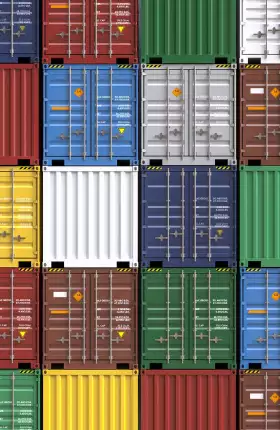For corporate leaders, tariffs represent more than just another cost line item. They inject a level of uncertainty that can reshape businesses fundamentally. The usual playbook—renegotiating sourcing terms or pricing—misses the bigger picture where tariffs are concerned. Today we are operating in a world of growing complexity and unpredictability where having strategic foresight isn’t optional, it’s table stakes.
Tariffs Are the Latest Shock—but Far from the Last
Like other shocks to the business environment, uncertainty around tariffs forces companies to reconsider fundamental aspects of their operations, from product portfolios and pricing strategies to capital allocation and competitive positioning. Yet the biggest disruptions often lurk in second- and third-order effects that are harder to quantify and even more decisive in separating leaders from laggards. Tariff volatility unsettles supply chain assumptions, constrains long-term investment decisions, and heightens the potential for misallocating critical resources.
In such an environment, rapid pivots and fast, informed decisions are essential to maximizing shareholder returns and sustaining a competitive advantage. Those pivots don’t need to be perfect; they just need to be faster, sharper, and more decisive than your competitors' moves. As military strategist John Boyd taught through his OODA loop, success favors those who can observe, orient, decide, and act with greater speed and clarity than the opposition.
Although the current US administration had long signaled its intention to raise tariffs, many companies were unprepared for the speed, magnitude, and volatility of recent developments, and for the marketplace’s reactions to them. Why, even when signals are clear, are companies still hesitant to act? In times of uncertainty, the psychological weight of making the wrong move often overshadows the strategic cost of standing still. This tension between risk aversion and the need for decisive action can paralyze even seasoned leaders. Yet recent events have broadened the scope of what corporate leaders must consider plausible.
Critically, tariffs are only one of many disruptions reshaping strategic landscapes globally. Companies must also grapple with climate change, cybersecurity threats, advances in generative AI (GenAI), reputation risks, geopolitical conflicts, and social unrest, among other disruptions. Responding effectively to each of these requires the ability to anticipate inflection points, sense changes rapidly, envision different potential futures, develop contingency plans, and adapt proactively instead of only reactively.
In this context, tariffs serve as the most recent urgent reminder of the need for companies to continuously deploy the various capabilities in their strategic foresight toolkit. Although underused, these tools are vital to achieving and maintaining an uncertainty advantage.
BCG’s Strategic Foresight Toolkit Turns Uncertainty into an Advantage
Strategic foresight tools include risk sensing, information curation and fusion, scenario-based planning, war games, and contingency planning. (See “BCG’s Strategic Foresight Toolkit.”) Increasingly, companies also use advanced analytical techniques—such as modeling, machine learning, and AI-driven trend detection—to detect early or weak signals and better interpret emerging trends. Collectively, these tools enable organizations to simulate a wide range of future scenarios—including how competitors, regulators, and technologies might shift—and test their responses to each set of possible conditions. Above all, organizations must stay alert to early signs of change in the environment and be ready to adapt quickly and seize opportunities as they arise, even if they are not yet fully formed.
BCG’s Strategic Foresight Toolkit
- The What. Gathering a broad array of data from digital devices, sensors, communications, and social media, among other sources, to capture what is happening
- The So What. Supercharged sensing and signal detection with advanced analytics, AI, and GenAI to help make sense of all the data, revealing why it matters
- The Now What. More effective applications of historically underused tools—including competitive simulations, scenario planning, and war gaming—to determine the best actions to strengthen strategy and build resilience
Strategic foresight also enables companies to move beyond purely defensive and reactive postures. Defensive strategies, such as cost-cutting, certainly have their place, but companies that complement them with offensive moves will position themselves for growth and long-term advantage. When informed and stress-tested by the broader strategic foresight process, flexible operating models help businesses identify new market opportunities, optimize product offerings, and adjust swiftly to seize a competitive edge by moving earlier than the competition on emerging trends or potential inflection points.
Combining strategic foresight tools with a culture that integrates risk intelligence into strategy is essential if leadership teams are to sense competitive moves and identify early-warning indicators time after time. By embedding this anticipatory capability into agile planning processes, businesses will position themselves to capitalize on new opportunities and respond to uncertainty with more risk-informed decisions. Ultimately, this is not about certainty. It’s about preparing your business to consistently make better bets than the rest of the field.
Applying the Toolkit to Tariff Uncertainty: An Illustrative Case
Consider the example of a hypothetical midsize US-based electronics manufacturer navigating tariff uncertainty. Facing serious downside disruptions—supply chain shocks, rising component costs, and fierce price pressure from competitors—the company knew the stakes were high. Without careful planning, it could experience severe margin erosion, market share loss, and layoffs.
The company began by thoroughly assessing multiple key variables—including tariff rates, trade agreement stability, regulatory shifts, supply chain disruptions, and competitors’ pricing responses—to explore a range of possible future scenarios. It could do this because it had a centralized sensing, scanning, and curating ability—an information fusion center—that drove continuous monitoring and reporting across and throughout the enterprise. By modeling various permutations of these factors, the company developed several plausible visions of the future and obtained an initial perspective on a winning strategic hypothesis for each scenario. Importantly, winning didn’t mean outperforming an ideal; it meant outperforming peers.
The company then looked across the complete set of scenarios to identify actions and capabilities that would be beneficial across most or all scenarios, allowing it to establish an initial set of “no-regret” moves. Examples included reconfiguring supply chains to make them more flexible, diversifying sourcing regions to mitigate concentration risks, and accelerating investments in automation. Regardless of specific outcomes that might eventually occur, these actions enhanced operational efficiency, built resilience, and often generated immediate value.
The company categorized actions or capabilities that would be effective under only one or two scenarios as “big bets” or “contingent moves.” For example, relocating significant manufacturing capacity might make sense only if certain tariff thresholds were breached. Taking decisive action here would require clear early-warning indicators and precise decision triggers to inform when one or more key changes in conditions might transform these situational moves into no-regret moves.
The company also recognized that it would not always have a first-mover advantage or the ability to control how competitors, customers, suppliers, regulators, and other stakeholders might act. To prepare for these uncertainties, it used war games to rigorously stress-test its own strategic plans and hypotheses, as well as its assumptions about others’ probable actions and motivations, technology developments, and policy shifts. This process led to the development of clear contingency plans and to identification of early-warning signals for potential market shifts that would activate these plans.
The company emerged from this exercise with a deeper understanding of how critical factors might interact to shape different potential versions of tomorrow. It developed a prioritized, risk-informed set of primary potential strategic actions, complemented by detailed contingency plans (Plans B, C, and beyond) and activation criteria for rapid implementation in response to changes in real-world conditions.
Just as importantly, the company enhanced its ability to identify, anticipate, and monitor early signs of strategic shifts, positioning itself to proactively and decisively respond to geopolitical events, tariff changes, and market disruptions—ideally before competitors’ disruptions or market upheavals took place.
Thanks to this foresight-driven process, the company avoided significant financial losses, preserved its market position, and even captured share from competitors that hesitated or relied on outdated assumptions. In uncertainty, preparation is performance. Conversely, in the absence of this strategic foresight approach, the company might have had to make reactive, rushed decisions that could have led to costly operational disruptions, lost opportunities, and diminished competitive advantage.
Extending an Uncertainty Advantage Across Disruptions
The importance of leveraging strategic foresight to achieve and maintain an uncertainty advantage does not begin or end with tariffs. The same frameworks and capabilities are directly applicable to managing climate-related risks, cybersecurity threats, and other geopolitical disruptions.
Ultimately, the goal is not to perfect prediction, but rather to be better prepared than the competition, regardless of what the future holds. Companies cannot precisely forecast tariff changes or other disruptions, nor should they aim to do so. Instead, they should develop the agility and foresight to sense, prepare for, and effectively respond to such disruptions, even shaping them at times. Ideally, businesses that have sharpened their strategic foresight can seize the initiative, turning disruptions into opportunities.
By embracing bold moves—such as advancing new technologies, shaping regulatory landscapes, launching innovative pilots, or pursuing nontraditional partnerships—companies give themselves the best shot at not only surviving disruption, but also shaping it and pulling ahead to thrive in it.






